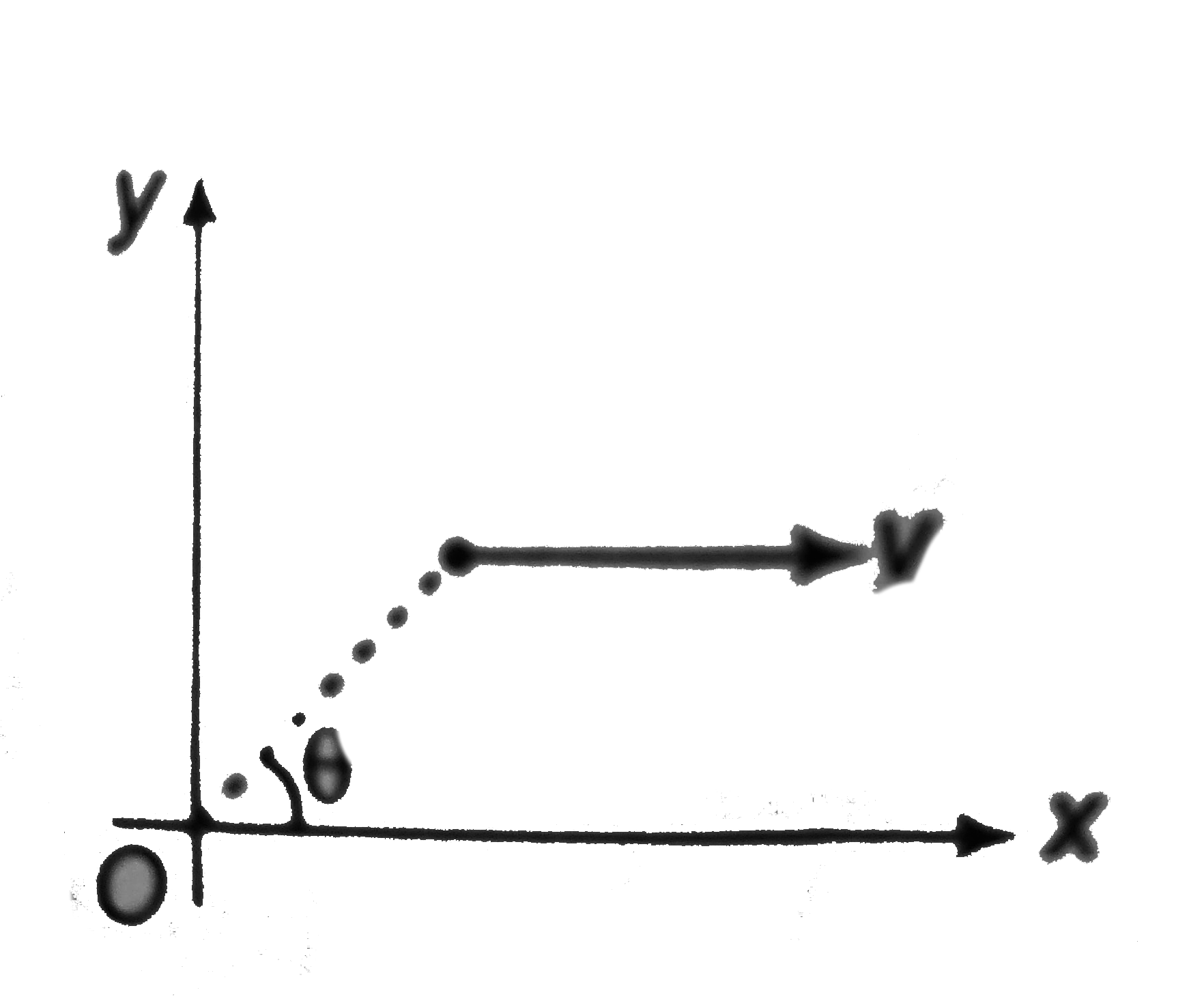A particle is going parallel to x-axis with constant speed V at a distance 'a' from the axis. Find its angular velocity about an axis passing the origin O, at the instant when radial vector of the particle makes angle θ with the x-axisSolution in Telugu
Vasin2θ
Vasin(θ)
2Vasin2θ
V2asin2θ
The correct Answer is:A
Step by step video, text & image solution for A particle is going parallel to x-axis with constant speed V at a distance 'a' from the axis. Find its angular velocity about an axis passing the origin O, at the instant when radial vector of the particle makes angle theta with the x-axis by Physics experts to help you in doubts & scoring excellent marks in Class 11 exams.
Topper's Solved these Questions
- BOOK - AAKASH SERIESCHAPTER - HORIZONTAL CIRCULAR MOTIONEXERCISE - LECTURE SHEET (EXERCISE-II (Tangential and Radial acceleration, Centripetal Force) (Straight Objective Type Questions))9videos
HORIZONTAL CIRCULAR MOTION
- BOOK - AAKASH SERIESCHAPTER - HORIZONTAL CIRCULAR MOTIONEXERCISE - LECTURE SHEET (EXERCISE-III (Applications of Circular Motion) (Straight Objective Type Questions))7videos
HORIZONTAL CIRCULAR MOTION
- BOOK - AAKASH SERIESCHAPTER - GRAVITATIONALEXERCISE - EXERCISE -3154videos
GRAVITATIONAL
- BOOK - AAKASH SERIESCHAPTER - KINEMATICSEXERCISE - ADDITIONAL PRACTICE EXERCISE (PRACTICE SHEET (ADVANCED)) (Integer Type Questions)12videos
KINEMATICS
Similar Questions
A car is moving with a speed of 30 ms−1 on a circular path of radius 500 m. If its speed is increasing at the rate of 2 ms−2 , the net acceleration of the car is
04:01View SolutionA boy is sitting on a horizontal platform in the shape of a disc at a distance of 5m from its centre. The boy begins to slip when the speed of wheel exceeds 10 rpm. The coefficient of friction between the boy and platform is: (g=10ms−2)
02:03View SolutionA satellite takes 1/8 years to move round the earth in its permissible orbit of radius R. The period when it revolves round the earth in an orbit of radius '2R' is
02:07View SolutionThree particles start from origin at the same time: one with velocity v1 along positive x - axis, the second along the positive y-axis with a velocity v2 and the third along the line y=x with such a speed that all the three always stay in a straight line, then the velocity of the third particle is √kV1V2(V1+V2).
02:40View Solution
A particle mass parallel to x-axis with constant velocity v as shown in the figure. The angular velocity of the particle about the origin O03:22View SolutionA particle moving parallel to x-axis as shown in fig. such that at all instant the y-axis component of its position vector is constant and is equal to 'b'. Find the angular velocity of the particle about the origin when its radius vector makes angle theta from the axis.
01:27View SolutionA particle is moving with constant speed v along the line y = a in positive x -direction. Find magnitude of its angular velocity about orgine when its position makes an angle theta with x-axis.
04:25View SolutionA particle of mass m is moving with constant velocity v parallel to the x-axis as shown in the figure. Its angular momentum about origin O is
View SolutionA particle moves parallel to X-axis as shown in the figure such that at all instant the y axis component of its position vector is constant and is equal to 'b'. The angular velocity of the particle about the origin is
View SolutionA particle is going parallel to x - axis with constant speed V at a distance 'a' from the axis . Find its angular velocity about an axis passing the origin O , at the instant when radial vector of the particle makes angle theta with the x - axis
04:25View Solution(A) : The angular momentum of a particle w.r.t origin moving parallel to x-axis with constant velocity is constant. (R ) : There is no change in the perpendicular distance of the particle from the origin when it travels prallel to x-axis.
View Solution(A): The angular momentum of a particle w.r.t origin moving parallel to x -axis with constant velocity is constant
(R): There is no change in the perpendicular distance of the particle from the origin when it travels prallel to x-axis.06:10View SolutionA particle is moving along a straight line parallel to x-axis with constant velocity. Its angular momentum about the origin
03:20View Solution(A) : The angular momentum of a particle w.r.t origin moving parallel to x-axis with constant velocity is constant.
(R ) : There is no change in the perpendicular distance of the particle from the origin when it travels prallel to x-axis.02:19View Solution(A) : The angular momentum of a particle w.r.t origin moving parallel to x-axis with constant velocity is constant
(R) : There is no change in the perpendicular distance of the particle from the origin when it travels parallel to x-axis.02:40View Solution

